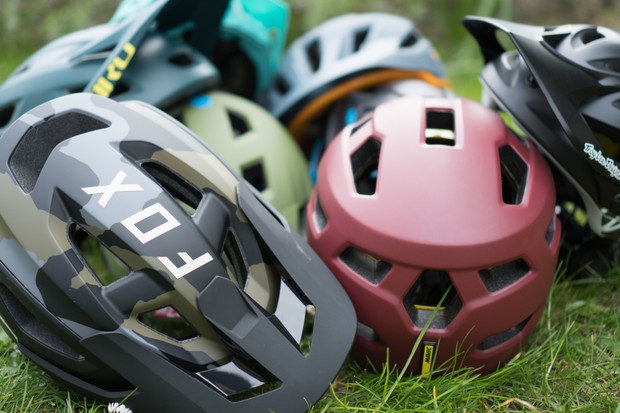Bike helmets are super important safety gear for cyclists of all ages and skill levels. They can help to prevent serious head injuries in the event of a crash. But how long do bike helmets last? This guide delves into the lifespan of bike helmets, exploring factors that influence their durability and when it’s time for a replacement.
Understanding the Lifespan of Bike Helmets: An Overview
The general consensus among cycling experts and helmet manufacturers is that bike helmets should be replaced every 3-5 years. This timeframe is recommended regardless of whether the helmet has been involved in a crash. The rationale behind this guideline is the natural degradation of materials used in helmet construction. Over time, these materials can weaken, diminishing the helmet’s effectiveness in providing head protection during impacts.
Key Factors Affecting Helmet Longevity
Several factors can influence how long a bike helmet lasts, including:
- Frequency of Use: Regular cyclists will find that their helmets wear out more quickly than those used less often. The more a helmet is used, the more it is exposed to elements like sunlight, sweat, and general wear and tear.
- Maintenance and Care: Proper storage and care significantly extend a helmet’s lifespan. Helmets should be stored in cool, dry environments and kept away from extreme temperatures and harsh chemicals. Regular cleaning with mild soap and water can also preserve the integrity of the helmet.
- Impact History: Any helmet that has been in a crash should be replaced immediately, even if there are no visible signs of damage. Impacts can compromise the helmet’s internal structure, reducing its ability to protect in future accidents.
The Science Behind Helmet Degradation
Understanding why bike helmets degrade over time involves a look at the materials used in their construction. Most helmets are made from expanded polystyrene (EPS) foam covered by a hard plastic shell. EPS foam is designed to absorb impact energy during a crash, but it can degrade and lose its effectiveness due to UV exposure, temperature fluctuations, and material fatigue. The plastic shell can also weaken over time, especially when exposed to sunlight for prolonged periods.
Staying Updated with Helmet Technology
Advancements in helmet technology can also be a reason to replace your helmet sooner. As safety standards evolve and new technologies emerge, newer helmets may offer better protection or enhanced features such as improved ventilation, reduced weight, or integrated lighting and communication systems.
How to Assess the Age of Your Helmet
Determining the age of your helmet can be straightforward. Most helmets come with a manufacture date stamped inside. If you can’t find the date, or if you purchased a second-hand helmet, consider the helmet’s overall condition and err on the side of caution by replacing it if it’s potentially over 5 years old.
Signs It’s Time to Replace Your Bike Helmet
Knowing when it’s time to replace your bike helmet is super important for maintaining optimal safety while cycling. Here are some key signs to watch for:
- Age: As mentioned earlier, if your helmet is more than 3-5 years old, it’s time to consider a replacement.
- Post-Crash Condition: Any helmet that has been involved in a crash should be replaced immediately, regardless of visible damage.
- Visible Signs of Wear and Tear: Look for cracks, dents, or any deformities in the helmet’s structure. Even minor damage can significantly compromise the helmet’s protective capability.
- Fit and Comfort Issues: Over time, helmets can lose their shape or padding, leading to a poor fit. A helmet that doesn’t fit snugly offers reduced protection.
- Worn or Damaged Padding: The interior padding of the helmet is super important for both comfort and safety. If the padding is worn out or damaged, it’s a clear sign that the helmet needs replacing.
- Loose or Faulty Straps: Straps are super important for keeping the helmet securely in place. If they’re frayed, stretched, or damaged, they can’t perform this vital function effectively.
- Fading or Discoloration: Noticeable fading or discoloration of the helmet’s shell is often a sign of prolonged UV exposure, which can weaken the plastic.
How to Choose a New Bike Helmet
When the time comes to purchase a new bike helmet, there are several factors to consider to ensure you get a helmet that offers the best fit and protection:
- Proper Fitting: A helmet should fit snugly but comfortably on your head. It shouldn’t be too tight or too loose.
- Coverage: Ensure the helmet covers your head adequately, including the front, back, and sides. Full coverage helmets offer better protection.
- Strap Adjustment: The straps should be adjustable to keep the helmet secure. When fastened, the helmet should not move excessively when you shake your head.
- Safety Certifications: Look for helmets certified by reputable safety organizations like the CPSC or the Snell Memorial Foundation. These certifications indicate that the helmet meets specific safety standards.
- Size: Helmets come in various sizes. Measure your head circumference and choose a helmet that corresponds to your measurement for the best fit.
- Ventilation: Good ventilation is super important for comfort, especially during long rides or in hot weather. Look for helmets with adequate venting to keep your head cool.
- Weight: Lighter helmets can be more comfortable, especially for long-distance cycling. However, ensure that the weight reduction does not compromise safety.
- Added Features: Some helmets come with additional features like integrated lights, MIPS technology for added rotational impact protection, or communication systems. Consider which features are important to you.
- Style and Aesthetics: While safety should be the primary concern, the style and look of the helmet are also worth considering. Choose a design that you like and that matches your cycling gear or bike.
- Budget: Bike helmets vary in price. Set a budget, but remember that investing in a good-quality helmet is investing in your safety.
Conclusion
Bike helmets are an indispensable part of cycling safety, playing a super important role in protecting riders from serious head injuries. To ensure that your helmet provides optimal protection, it is important to replace it every 3-5 years, even if it hasn’t been involved in a crash. Recognizing the signs that it’s time to replace your helmet and understanding how to choose and care for a new one can really improve your safety on the road. Remember, a well-maintained helmet is a key component of safe cycling practices. For more information and a selection of high-quality bike helmets, visit our homepage at Refried Cycles.









